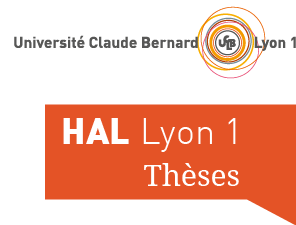Hydrothermal fabrication of a ZnO/PbS based heterojunction deposited on a conductive, flexible and transparent substrate for photoelectrochemical application
Elaboration par voie hydrothermale d'une hétérojonction à base de ZnO/PbS déposée sur un substrat conducteur, transparent et flexible pour application photo-électrochimique
Résumé
Nanostructured materials are extremely promising to efficiently convert solar energy using photovoltaic and photoelectrochemical cells, provided that nanostructures of controlled size and morphology are obtained. The objective of this thesis is, on the one part, to optimize the experimental conditions for the growth of ZnO nanowires on a flexible, conductive and transparent substrate (ITO/PET), and on the other part, to create a heterojunction through a core-shell structure based on ZnO/PbS NFs by hydrothermal process, for potential applications exploiting the interactions of light with electrochemical systems. The control of the totality of the elaboration process, simple and reproducible, is achieved through a systematic methodology of study of the parameters intervening on the structural and morphological quality of the nanostructures. In the first part of this work, the sol-gel deposition of seed layers was optimized according to the nature of the solvent, the number of layers and the annealing time, in order to obtain a compact, homogeneous and well oriented layer. In the second part, the growth of optimized c-axis oriented ZnO nanowires perpendicular to the substrate and with perfect alignment was optimized based on the quality of the seed layer, the concentration of the precursors, and the filling rate of the hydrothermal cell. These nanowires were obtained in a wide range of diameter (77-315 nm), length (0.5-2.37 μm) and a maximum aspect ratio of 30.69. The developed ZnO@PbS heterostructures were characterized by X-ray diffractometry (XRD), scanning electron microscopy (SEM), UV-visible spectroscopy and photoluminescence (PL). The thermodifferential analysis allowed a continuous calorimetric analysis of the growth of the NFs and of the important reaction steps to obtain ZnO. The hexagonal (wurtzite) crystal structure of ZnO and cubic structure of PbS was confirmed by DRX. UV-Visible spectroscopy shows the enhanced visible light response of the ZnO-PbS heterojunction compared to ZnO. Finally, the study of the performance of the photoelectrochemical cell varies with the concentration of a new precursor, urea.
Les matériaux nanostructurés sont extrêmement prometteurs pour convertir efficacement l'énergie solaire par des cellules photovoltaïques et photoéléctrochimiques, à condition d'obtenir des nanostructures de taille et de morphologie contrôlées. L'objectif de cette thèse porte, d'une part, sur l'optimisation des conditions expérimentales de croissance de nanofils de ZnO sur un substrat flexible, conducteur et transparent (ITO/PET), et d'autre part sur la création d'une hétérojonction au travers d'une structure cœur coquille à base de NFs de ZnO / PbS par voie hydrothermale, en vue d'applications potentielles exploitant les interactions de la lumière avec les systèmes électrochimiques. La maîtrise de l'ensemble du processus d'élaboration, simple et reproductible, est réalisée à travers une méthodologie systématique d'étude des paramètres intervenant sur la qualité structurale et morphologique des nanostructures. Dans la première partie de ce travail, le dépôt sol-gel de couches d'amorce a été optimisé en fonction de la nature du solvant, du nombre de couches et du temps de recuit, afin d'obtenir une couche compacte, homogène et correctement orientée. Dans la seconde partie, la croissance de nanofils de ZnO orientés selon l'axe c perpendiculairement au substrat et parfaitement alignés a été optimisée en fonction de la qualité de la couche d'amorce, la concentration des précurseurs et le taux de remplissage de la cellule hydrothermale. Ces nanofils ont été obtenus dans une large gamme de diamètre (77-315 nm), de longueur (0,5-2,37 μm) et un rapport d'aspect maximum de 30,69. Les hétérostructures ZnO@PbS ainsi élaborées ont été caractérisées par diffractométrie de rayons-X (DRX), microscopie électronique à balayage (MEB), spectroscopie UV-visible et photoluminescence (PL). L'analyse thermodifférentielle a permis un suivi calorimétrique en continu de la croissance des NFs et des étapes réactionnelles importantes de l'obtention de ZnO. La structure cristalline hexagonale (wurtzite) de ZnO et cubique de PbS a été confirmée par DRX. La spectroscopie UV-Visible montre l'amélioration de la réponse à la lumière visible de l'hétérojonction ZnO-PbS par rapport à la ZnO nu. Finalement, l'étude de la performance de la cellule photoélectrochimique varie en fonction de la concentration d'un nouveau précurseur, l'urée.
Origine : Version validée par le jury (STAR)
